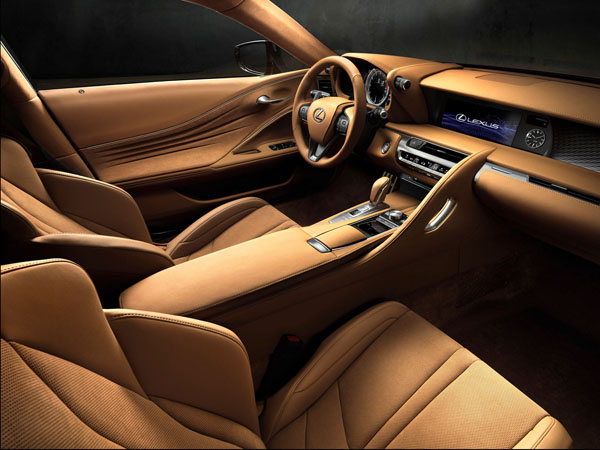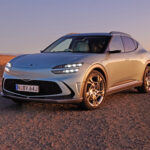It is generally recognised that Dame Nellie Melba made more comebacks to the operatic stage than a well-used boomerang. What is not so well known is that the prima donna was one of the first female car owners in Australia.
The redoubtable Dame took to motoring (with a chauffeur) so enthusiastically she kept motor cars on three continents – an electric Brougham in Europe, a couple of Pierce-Arrows in the US, a Type AX Renault and later a Rolls-Royce Silver Ghost in Australia.
How appropriate that Lexus should choose Coombe Cottage, Lilydale, in the Yarra Valley, the diva’s home Down Under, to unveil the LC 500 coupe, which with its LC 500h hybrid cousin, will make its debut Down Under next year.
The wraps were taken off the stunning four-seater flagship at this year’s North American International Auto Show in Detroit, and is being hailed by Lexus as the strongest ever statement of where its future lies.
The 5.0-litre twin-cam V8 LC 500 will be the first Lexus underpinned by the company’s new Global Architecture Luxury (GA-L) platform, the most torsionally rigid produced by the company, and is a blueprint for all future front-engine, rear-drive models. It will also feature the world’s first 10-speed automatic transmission in a luxury vehicle.
Lexus claims a zero to 100 km/h time of less than 4.5 seconds.
Lexus’ Chief Branding Officer and Master Driver, Akio Toyoda, who was integral in the development of the production model since it was first shown as the LF-LC concept at the Detroit Motor Show in 2012, says: “A few years ago we decided to guide the future of the brand with products that had more passion and distinction in the luxury market. This flagship luxury coupe’s proportions, stunning design and performance make a strong statement about our brands’ emotional direction, and will grow the Lexus luxury appeal globally.”
First impressions show the designers and engineers hit it off, with the LC 500 incorporating many of the design elements from the show car. With an athletic aerodynamic shape topped off by a sleek carbon fibre roof the car creates a low, wide stance that’s highly functional.
Up front the Lexus signature spindle grille is outlined on three sides by chrome and a radical new 3-D mesh design. The L-shaped daytime running lights support a new triple LED headlamp unit, which includes one of the thinnest projectors to allow for a low bonnet with short front overhang.
Venting is not just for show, playing a part in aerodynamic stability of the vehicle as well as cooling. In profile the designers have come up with a sleekly sloping roofline and rear overhangs that feature slim, multi-layered tail lamps conveying the ‘L’ motif.
A rear diffuser and optional active rear spoiler help manage airflow at speed for the vehicle. It rolls on 20-inch cast aluminium or optional 21-inch forged aluminium wheels.
The front seats offer a high level of support and comfort for long drives, while optional sport seats offer added bolstering and lateral support during fast cornering.
With a sharper, more refined driving experience on the menu the development team also sought to maintain a ride quality befitting a flagship luxury sports coupe. Engineers focused most of the mass, including engine and occupants, in a position more centralised, and lower in the chassis to improve the centre of gravity. With no spare wheel, the LC 500 relies on run-flat tyres in a bid to reduce weight and help shorten overhangs. The 12-volt battery is in the boot to help redistribute weight.
This car has Lexus’s most intensive use of high-strength steel resulting in enhanced rigidity and a close-to-ideal 52:48 front / rear weight distribution.
Particular attention was paid to the multi-link suspension to allow for control of the smallest driver input and road conditions. A dual ball joint arrangement helps to create a more precise steering response, while grip is optimised by Michelin Sport tyres – 245/40 RF21, front; 275/35 RF21, rear.
Heart of the new LC 500 comes from the proven, high-revving naturally aspirated 5-litre V8 found in the RC F and GS F, chosen for its smooth, linear throttle response and spirited engine sound. The all-aluminium, 32-valve V8’s output is put at 351kW and 530Nm. The new engine is built for durability with lightweight, high-strength forged connecting rods and titanium valves that allow it to excel at high revs, while special exhaust sound-control valves, activated at start-up, help to provide a rebellious growl on coming to life.
For the first time in a luxury car, the LC 500 features a newly developed 10-speed automatic transmission, with shift times rivalling those of a dual clutch system, putting power to the rear wheels. We are told the unit is smaller and lighter than some eight-speed automatics.
The flagship coupe will introduce the 2017 Lexus Multimedia package and optional Mark Levinson audio. A new premium Pioneer system comes as standard.
The LC 500 will also boast the company’s renowned safety technology, Lexus Safety System+, which incorporates a pre-collision system, which helps prevent or mitigate collisions; lane keep assist, which stops vehicles wandering out of their lanes; automatic high beam, which provides optimal forward visibility during night driving and all-speed active cruise control.
Lexus Australia says the new LC 500 will be launched here next year and will be available powered by the high-revving 5.0-litre V8 petrol engine, or a high-performance highly efficient hybrid model featuring the revolutionary Multi Stage Hybrid System.














